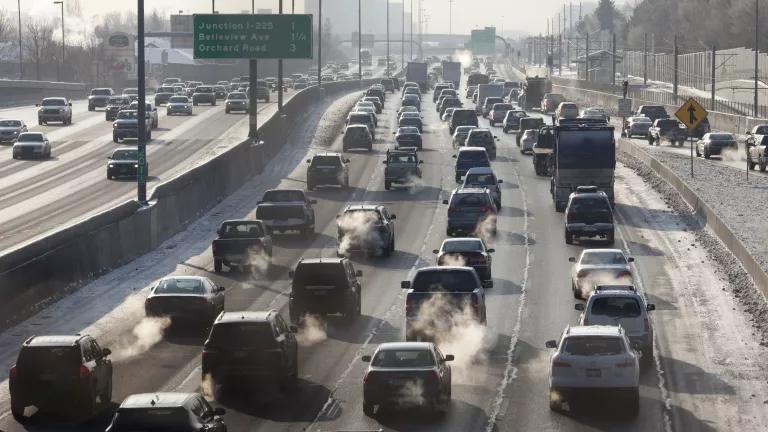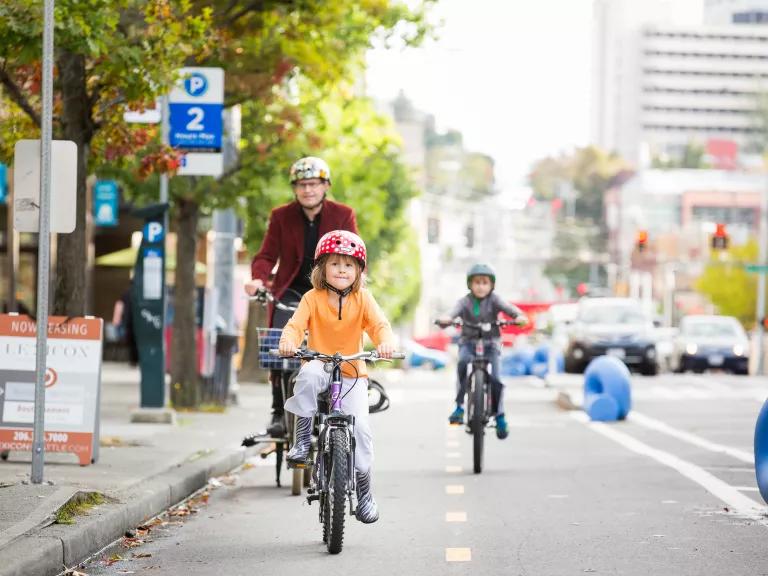States Remain in the Lead on Addressing Transportation Emissions
Litigation may delay important federal rulemaking, but states can continue to act.

Transportation is the largest source of greenhouse gas emissions in the United States, and there can be no long-term, successful climate action absent progress in reducing emissions from this sector. Last November, the Department of Transportation released its long-awaited Greenhouse Gas Performance Measure rule, which is a common-sense rule requiring all 50 states to measure the climate impacts of their transportation choices and set reduction targets. This rule, which received more than 100,000 letters of support, would provide greater transparency about the billions the federal government is providing states in transportation infrastructure, and it allows states the flexibility to set their own goals for reducing emissions. For better or worse, it bears repeating that there are no penalties for states that do not submit targets.
Stop Me If You Think You’ve Heard This One Before
Unfortunately, two different lawsuits were filed in December to strike down this rule: one was filed in Kentucky by the state’s Attorney General and included a consortium of twenty other states, and the other was submitted in Texas by its Attorney General. One unfortunate result of this litigation is the required February 1st deadline for those states to submit their targets has been postponed 45 days due to a request from the plaintiffs. There is still some uncertainty whether this delay applies to all states or only those party to the lawsuit. Close followers of this issue will recall that a similar rule was passed during the tail end of the Obama administration, but then the following administration immediately suspended the rule, which NRDC sued over. Ultimately the rule was repealed which made NRDC’s lawsuit moot.
Some States Are Leading the Way
States and regions can, and should, continue to move forward with climate friendly investments regardless of this regardless of this litigation. This new rule simply codifies in many ways what states already have the capacity to do. States and MPOs can use data that are collected and displayed publicly by the Federal Highway Administration (FHWA) to create emissions estimate and projections. Additionally, the flexibility that is built into the program means that states and MPOs should be able to set targets suited to their particular context.
In an inspiring move, on January 8th, 14 State Departments of Transportation and the District of Columbia sent a letter of thanks to FHWA for adopting the final rule, showing a commitment to moving forward with implementation despite any challenges. As they said in the letter, “State department of transportation can take meaningful actions to cut greenhouse gas emission from the transportation sector and, at the same time, better connect our communities, grow our economy, and improve public health.”

Separately, a coalition of national and state climate and transportation organizations, led by Evergreen Action, sent letters to governors in 22 states who are on record supporting climate action, urging them to set targets in line with the greenhouse gas emissions reduction targets under the performance rule. NRDC Director of Transportation Advocacy Shruti Vaidyanathan was quoted in the letter saying, “It's time for state Departments of Transportation to increase transparency and accountability on greenhouse gases. With historic levels of transportation infrastructure funding flowing to states and the effects of the climate crisis becoming more obvious every day, States can set common-sense targets to make progress on reducing transportation emissions and improving mobility for their residents.”
The letters include six common-sense recommendations for governors to incorporate in implementation of the measure, including:
- Aggressive initial targets consistent with each state’s climate commitments
- Specific goals for reducing pollution in environmental justice communities
- Consideration of both electrification and vehicle mile reduction strategies while setting targets
- Efforts to set additional, longer-term 8- and 20-year reduction targets
- A transparent methodology for target setting and easily digestible reporting platforms for greater accountability
- Revising state transportation investment plans to ensure project selection accounts for these new targets
While this legal action is a stumbling block, states and regions should not wait to set greenhouse gas performance measure goals. States that have done that should begin to fund and build the type of projects that will reduce emissions and increase quality of life: clean and frequent transit, more publicly accessible electric vehicle charging stations, and safer walking and biking infrastructure to name only a few. In fact, there has never been a time with more funding available to do exactly that!



